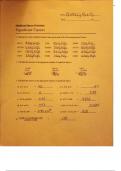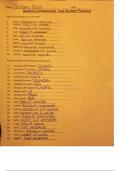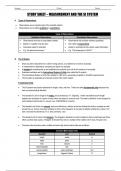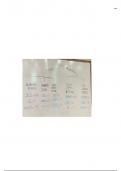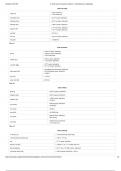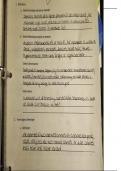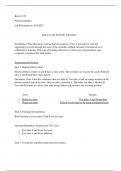Middlesex Community College
Latest uploads at Middlesex Community College. Looking for notes at Middlesex Community College? We have lots of notes, study guides and study notes available for your school.
-
39
- 0
-
1
All courses for Middlesex Community College
Latest notes & summaries Middlesex Community College
This document includes in-class notes and detailed chapter notes. It includes definitions, examples, and summarized textbook information. Each chapter is also a different color for differentiation.
Answer the questions below. Use the essay for support of your answers. You can use small quotes. (less than 10 words) You should introduce your evidence by saying, in the essay Tan says, whether you use a small quote or you paraphrase. To paraphrase is to put the information into your own words. You should use both in the response. Both need an in text citation. The in text citation which is the author’s last name.
The fundamental concepts of inorganic chemistry including the physical and chemical properties of matter, atomic structure, chemical bonding, stoichiometry, the gas laws, solutions, acids and bases, redox reactions, and chemical equilibria.
The fundamental concepts of inorganic chemistry including the physical and chemical properties of matter, atomic structure, chemical bonding, stoichiometry, the gas laws, solutions, acids and bases, redox reactions, and chemical equilibria.
The fundamental concepts of inorganic chemistry including the physical and chemical properties of matter, atomic structure, chemical bonding, stoichiometry, the gas laws, solutions, acids and bases, redox reactions, and chemical equilibria.
The fundamental concepts of inorganic chemistry including the physical and chemical properties of matter, atomic structure, chemical bonding, stoichiometry, the gas laws, solutions, acids and bases, redox reactions, and chemical equilibria.
The fundamental concepts of inorganic chemistry including the physical and chemical properties of matter, atomic structure, chemical bonding, stoichiometry, the gas laws, solutions, acids and bases, redox reactions, and chemical equilibria.
The fundamental concepts of inorganic chemistry including the physical and chemical properties of matter, atomic structure, chemical bonding, stoichiometry, the gas laws, solutions, acids and bases, redox reactions, and chemical equilibria.
A study of the cell, the fundamental unit of biological structure and function. An introductory section on bioenergetics and biochemistry lay the groundwork for the consideration of the cell through a modern interdisciplinary approach. The course examines the ultrastructure of the cell and of the most universal cell functions: transport, cellular respiration, photosynthesis, cellular reproduction, and protein synthesis.
A study of the cell, the fundamental unit of biological structure and function. An introductory section on bioenergetics and biochemistry lay the groundwork for the consideration of the cell through a modern interdisciplinary approach. The course examines the ultrastructure of the cell and of the most universal cell functions: transport, cellular respiration, photosynthesis, cellular reproduction, and protein synthesis.



